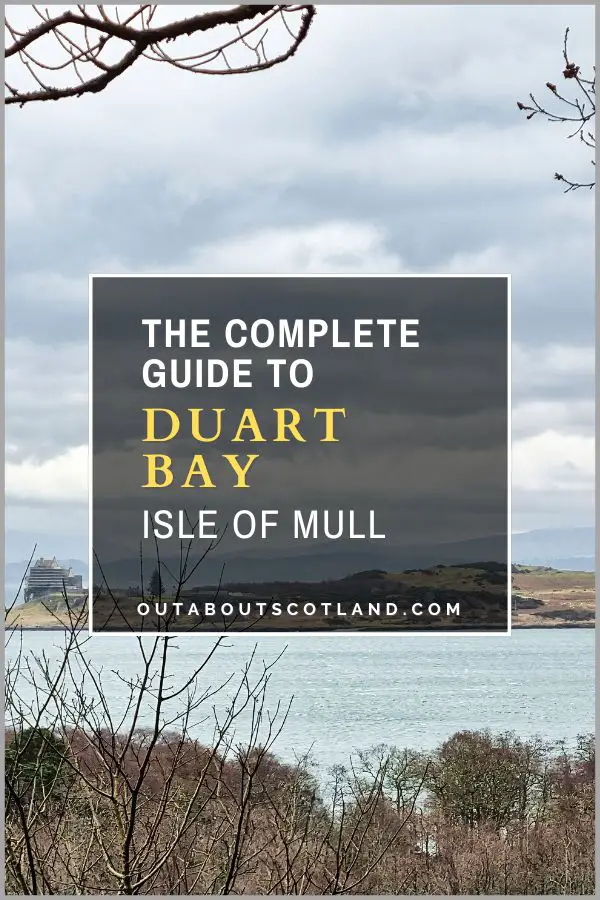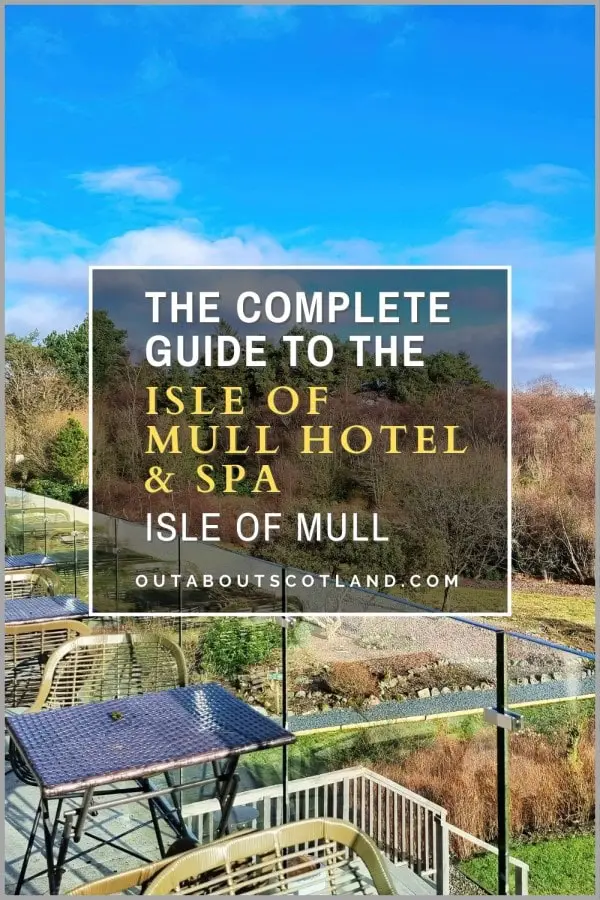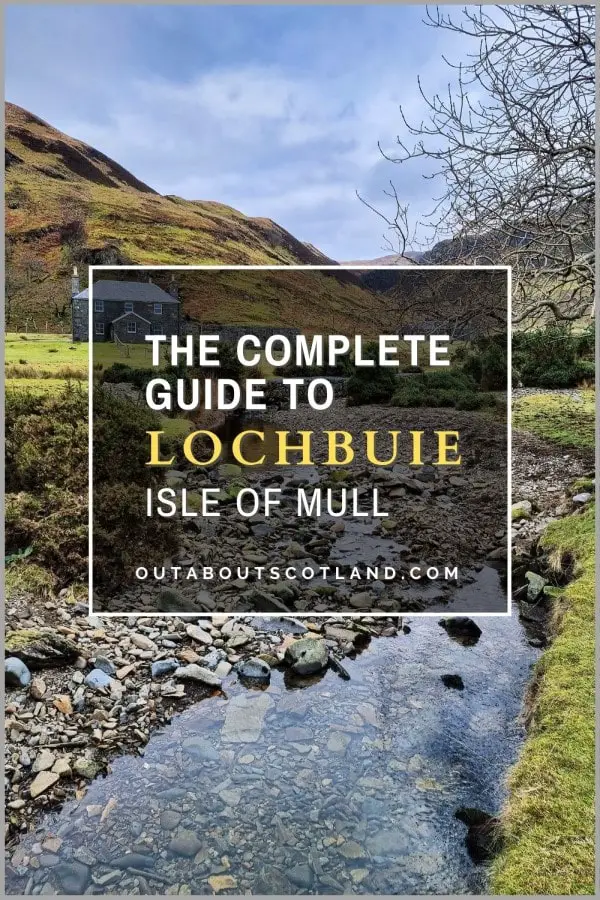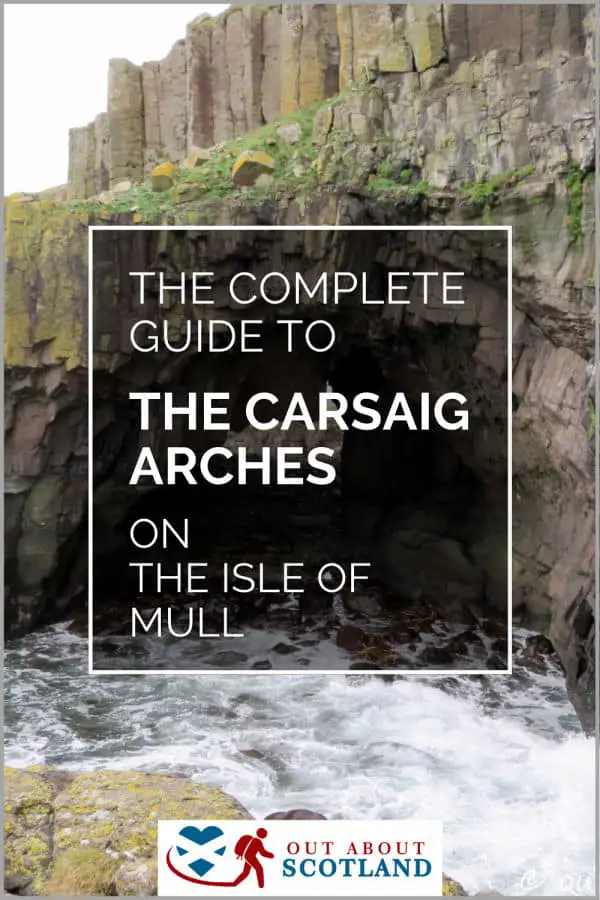The Isle of Mull is the second-largest island in the Inner Hebrides and is home to attractions including Tobermory, Ben More, and Iona Abbey. The island is a popular alternative to Skye as it offers almost as many places to visit but sees fewer tourists.
Mull offers a range of accommodation options including hotels, guesthouses, and campsites, and getting there is easy as visitors can take a ferry from Oban on the mainland, which only takes around an hour.
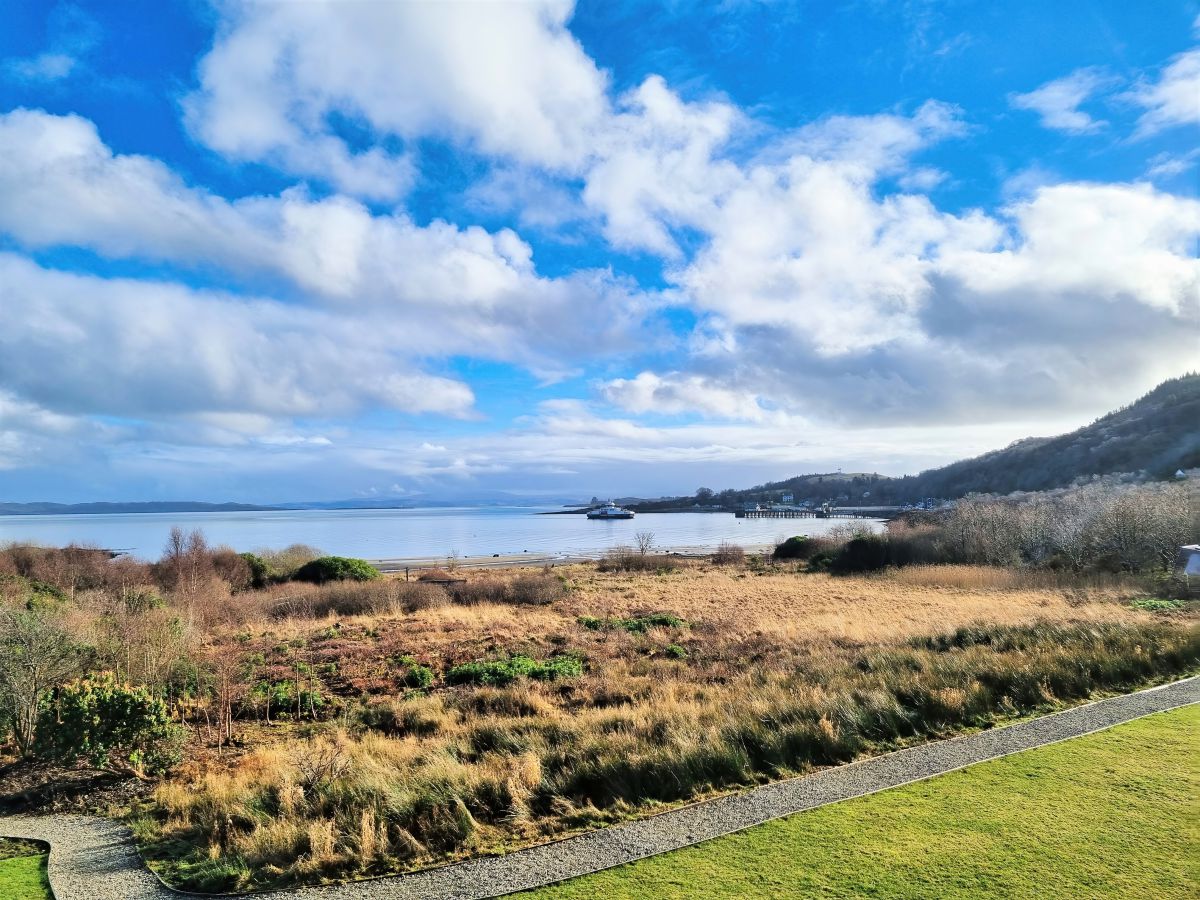
Overview
One of the main attractions of Mull is its breathtaking scenery. From rugged mountains and rocky coastlines to pristine beaches and tranquil lochs, the island offers a wide range of places to visit. The iconic Ben More mountain dominates the skyline in the middle of the island, while the northern and southern halves are home to rolling hills, moorland, and expansive woodlands.
Wildlife enthusiasts will be delighted by the abundance of animals on Mull. The island is home to a variety of bird species including white-tailed eagles, golden eagles, and puffins, and visitors might also spot seals, dolphins, and even whales off the coast. Mull is also known for its population of otters which can often be seen playing along the shoreline.
In addition to its natural wonders, Mull also has a rich history and cultural heritage. The island is scattered with ancient castles and standing stones, while villages like Tobermory, with its colourful buildings lining the harbour, are a must-visit.
Outdoor activities abound on Mull, with opportunities for hiking, cycling, fishing, and watersports, and the island has a large number of well-marked trails and paths, allowing visitors to explore its landscapes either on foot or by bike.
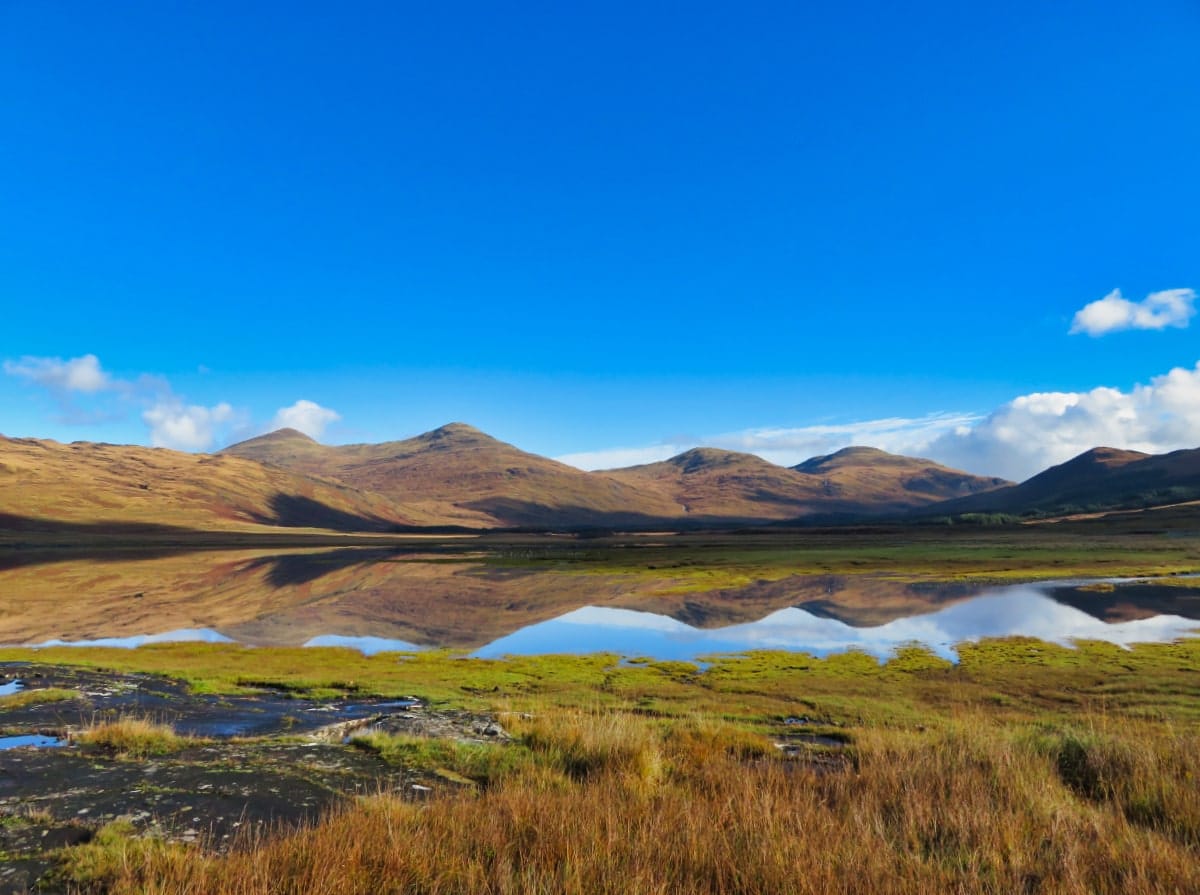
Book Tours in Scotland
The Highlights
1: The Isle of Mull is renowned for its breathtaking landscapes. The iconic Ben More provides plentiful opportunities for hiking and the coastline is dotted with dramatic cliffs and hidden coves that are perfect for exploring.
2: Mull is a paradise for wildlife enthusiasts. The island is home to white-tailed eagles, golden eagles, and puffins, as well as seals, dolphins, and whales, to name just a few species. Guided wildlife tours and boat trips are popular ways to watch and learn about the diverse wildlife that inhabits the island.
3: Explore the ruins of Duart Castle, a 13th-century fortress that offers panoramic views of the Sound of Mull, and visit the Isle of Mull Museum in Tobermory to learn about the island’s history and culture. The colourful village of Tobermory is another highlight, with its charming harbour lined with brightly painted buildings, boutique shops, and art galleries.
Visiting Tips
1: The Isle of Mull is easily accessible by ferry from Oban on the mainland, but it’s still important to plan your trip in advance and check the ferry schedules, especially during peak tourist seasons. Keep in mind that weather conditions can affect ferry services so it’s a good idea to check the Calmac website for any potential disruptions.
2: If you intend to hike in the wilds of the island, make sure to pack appropriate clothing and gear for your preferred outdoor activities. The weather can change quickly, even in the summer, and most of the island is uninhabited for miles around. For this reason, I recommend packing a power bank for your mobile phone, and installing an offline map such as the ones provided by Ordnance Survey.
3: The grocery shops on Mull are expensive, so do as much food shopping as possible on the mainland and take it with you on the ferry. If you need to purchase food while on Mull, the best option is the Co-op in Tobermory.
Protect Your Family From Scotland's Biting Midges
- Powerful, reliable protection for up to 8 hours
- Water- and sweat resistant
- Repels midges, mosquitoes, horse flies, sand flies, fleas and ticks
- Safe for use on adults, children over 30 months and pregnant women
- Non-sticky, moisturising with a pleasant fragrance
- Packaging may vary
Places to Visit on Mull
There’s a huge amount of activities to get involved with on Mull, and in fact, there are so many to choose from that you might need a little extra time to ‘mull over’ which ones to visit first (see what I did there?). But the three biggies that you’ll most likely want to see are the town of Tobermory, the Isle of Iona and Iona Abbey, and Ben More.
Tobermory
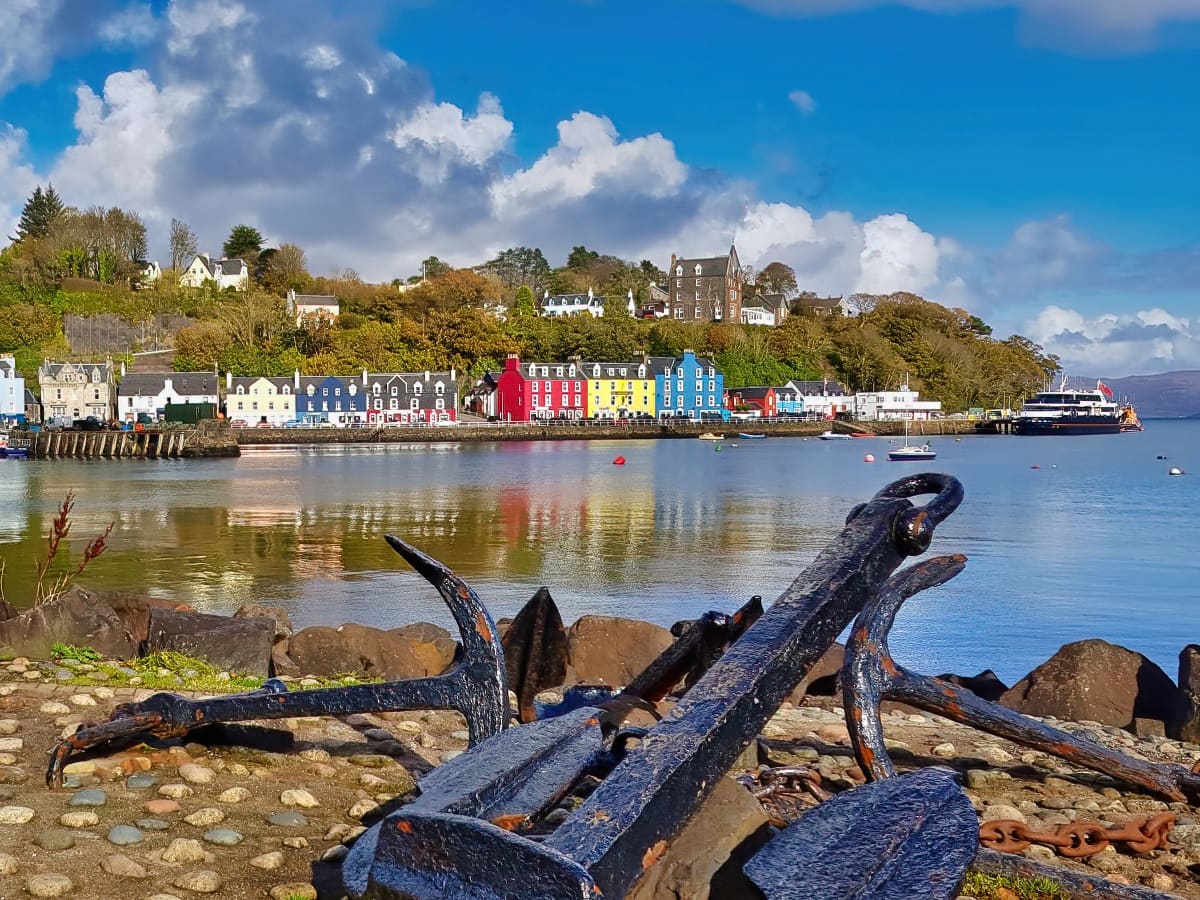
Situated on a bay facing the Sound of Mull, this pretty village initially strikes you with its row of brightly coloured houses that follow the curve of the harbour, and if you think you’ve seen it before and have kids, you’ll soon recognise it as the setting for the popular children’s TV show, Balamory.
There are frequent fishing vessels coming in and out of the quaint harbour so it’s a great place to get some fresh seafood, and the village has a few restaurants that specialise in crab and shellfish.
Attractions include the Mull Museum (free to enter) that will tell you all about the history of this fascinating island, and there’s a live music venue at An Tobar if you feel like extending your visit into the evening.
If you’re a fan of whisky, then you should definitely pay a visit to the Tobermory Distillery Visitor Centre located near the car park as they have some absolutely first-class spirits on offer. While dads are getting all misty-eyed over Mull’s single malts, mums and kids can pop next door into the Mull aquarium.
This fascinating attraction has the accolade of being Europe’s first catch-and-release aquarium, which means that all exhibits are collected by local fishermen and kept on-site for a maximum of 4 weeks before being returned to the sea.
Iona
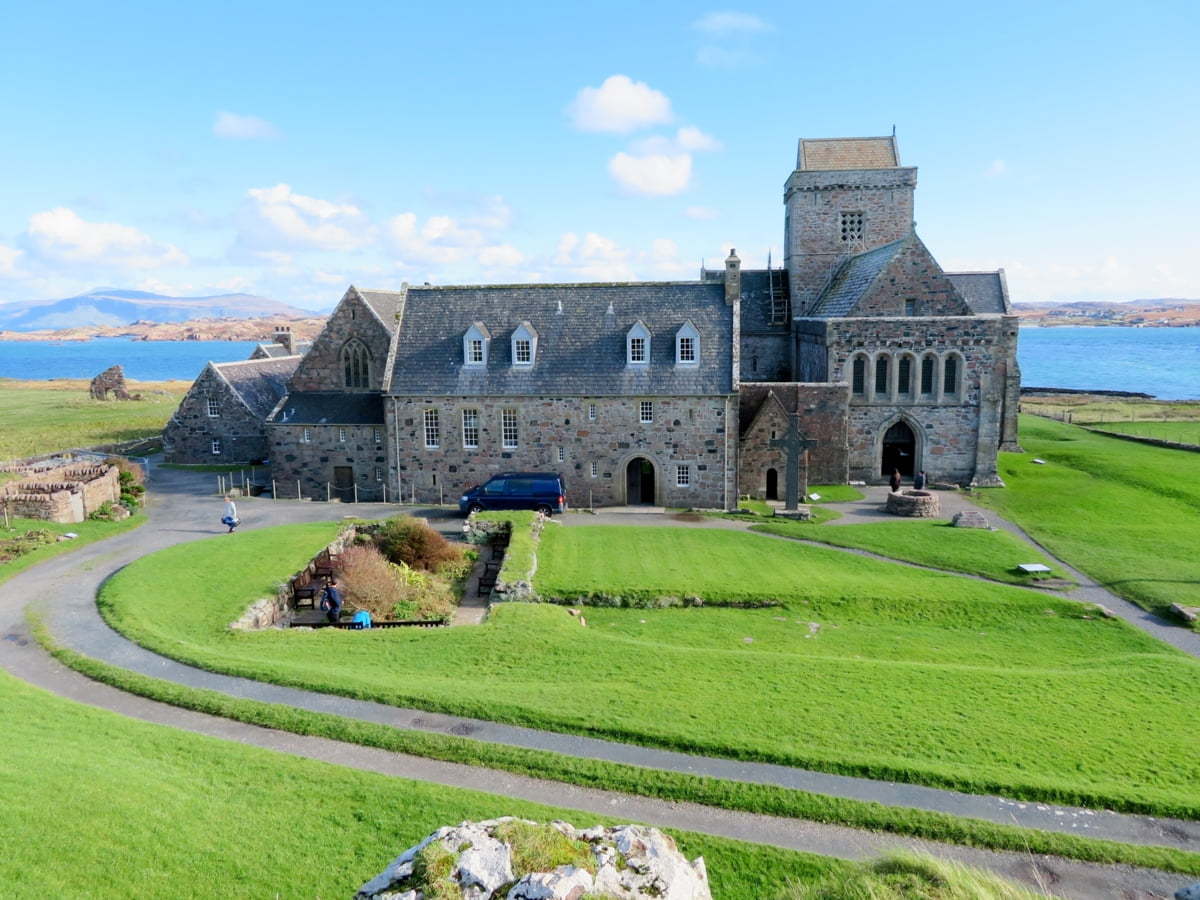
Leaving Mull, you can take a drive on the island’s mostly single-track roads to its southwest extremity to catch a small ferry across to the island’s other big attraction, Iona Abbey.
This 13th-century abbey was actually built on a religious site that was founded over 600 years earlier, and today Iona is regarded as Scotland’s most sacred site. The abbey is not only the final resting place of several ancient Scottish kings, but it’s also the site where Saint Columba built his first Celtic church all the way back in the 6th century. It’s fair to say there’s a lot of history on this small island.
Iona itself is a lovely wee place with some beautifully clean white-sand beaches, and although it’s only 3 miles long by 1.5 miles wide, it has several walking trails that are worth following. The small village near the ferry landing point also has a couple of art galleries and shops selling locally made gifts, and there are the ruins of an Augustinian nunnery to explore as well.
Ben More
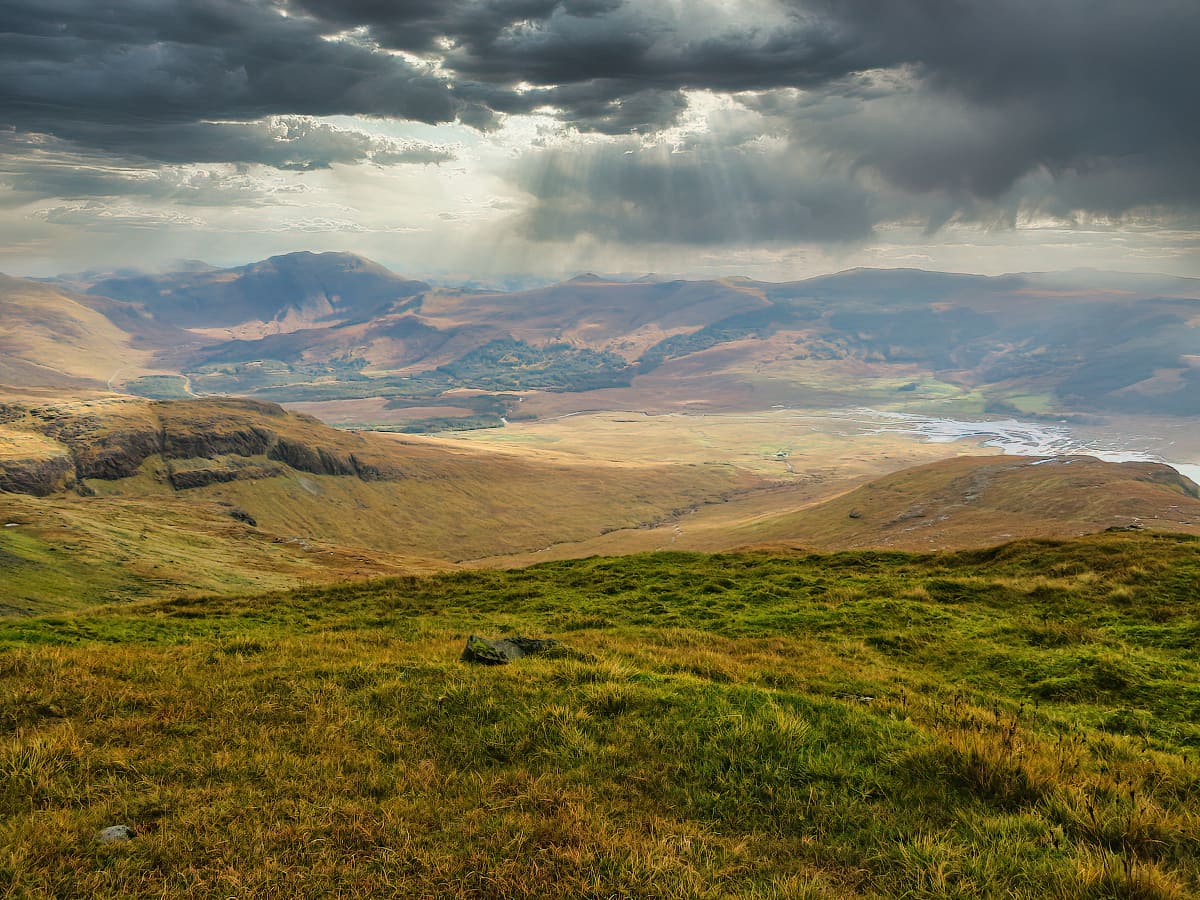
Another great attraction on Mull is Ben More, the 3,169-foot mountain that dominates the landscape for miles around. This mountain (it’s actually a Munro, a Scottish mountain over 3,000 feet) draws in thousands of visitors annually who scramble up its steep scree slopes on the north and south sides.
Not only is Ben More the highest peak on the island, but it’s also one of the highest in the entire Inner Hebrides, only beaten by the mountains on the Isle of Skye. While Ben More can’t take credit for being the tallest mountain, I have to say it wins the award for having the best views, with the panorama from the top encompassing the Sound of Mull, the islands of Staffa and Ulva, the Isle of Skye, and the Highlands over on the mainland.
Other Attractions
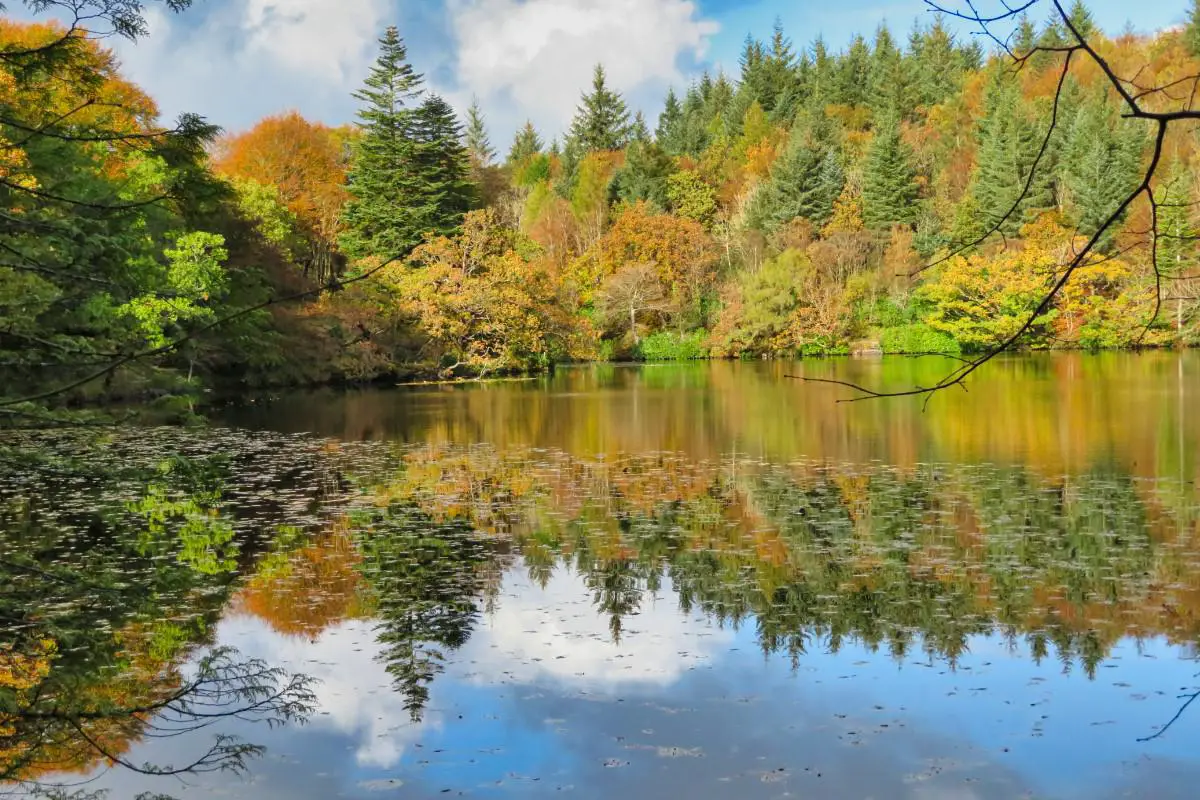
There are simply too many other attractions to include on one page, but I have a few recommendations that you might be interested in if thoughts of Tobermory, Iona, and Ben More have already whetted your appetite.
First, head to the northern part of the island to the small village of Dervaig, which lies a few miles west of Tobermory, and follow the walking route to Quinish Point. Once there, you’ll find a magnificent peninsula that’s home to several pairs of Britain’s largest bird, the majestic Sea Eagle (also known as ‘the flying door’ because of its immense size).
Another highlight of Mull is Calgary Bay, located on the west side of the island. This incredibly charming and isolated bay has a wide expanse of white sand, some of the clearest sea water you’ll ever see, and a fun woodland sculpture walk.
The bay is a haven for wildlife, and you can pretty much guarantee you’ll either see otters swimming about on the hunt for their next meal or seals lazing around on the nearby rocks. No wonder the beach has been voted among the top 20 in the UK.
The Carsaig Arches are worth visiting too, but only if you’re relatively fit and don’t mind a challenging walk and scramble over rocks. The arches themselves are sea caves that have been carved through cliff faces by the power of the crashing waves, and while they’re certainly impressive, it’s the walk to the arches that draws most visitors.
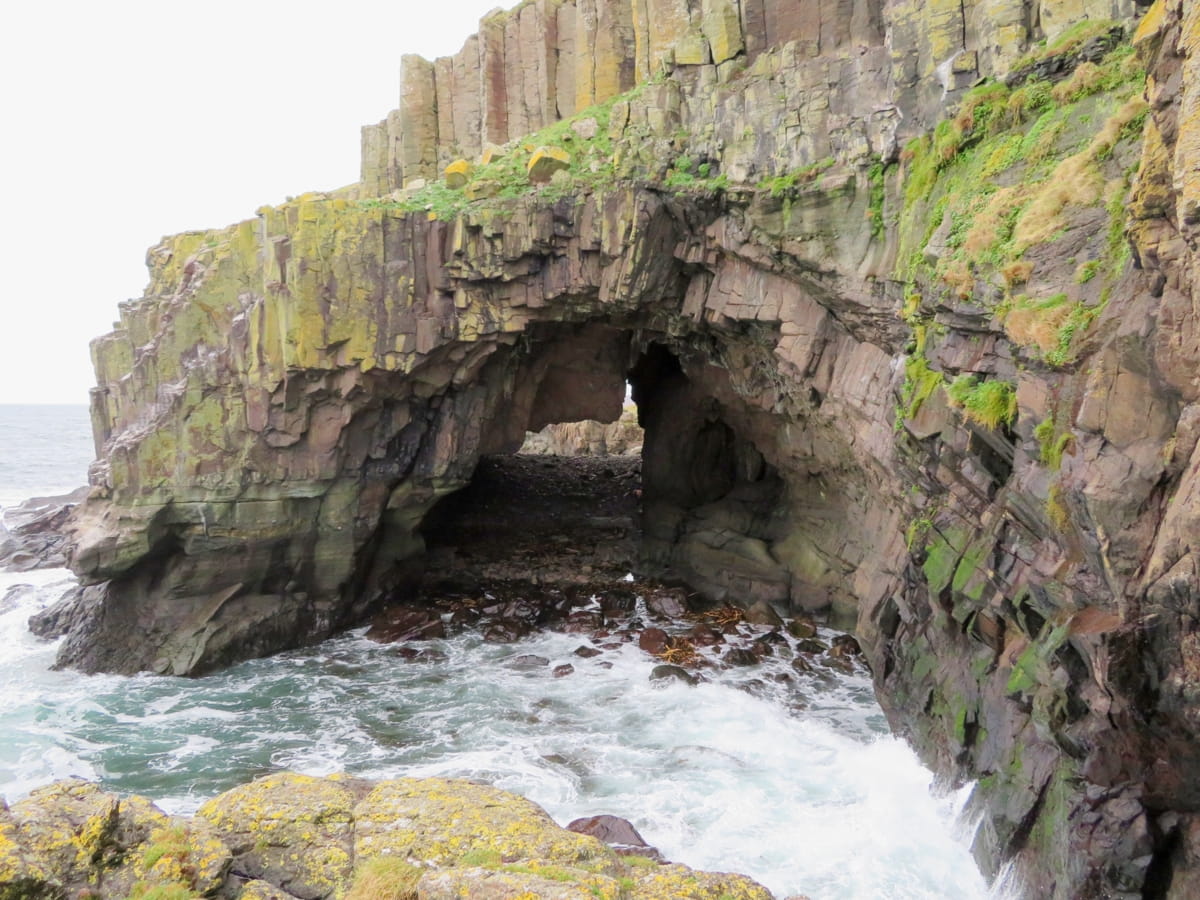
The route starts at Carsaig Pier, which is worth visiting in itself because there are often seal colonies soaking up the sun on the exposed rocks jutting out of Carsaig Bay. After waving goodbye to the seals, you’ll walk along rocky beaches and boggy grassland while following a boulder-strewn goat track, in-between scurrying across waterfalls and traversing narrow clifftop paths.
Along the route you’ll find the Nun’s Cave where Iona’s nuns once sought refuge, birds of prey scouting for food, and herds of wild goats looking for their next mouthful of tasty grass. It’s a wildlife lover’s dream, although I don’t recommend attempting this walk in bad weather as the rocks are slippery and there are some steep drops into the sea in some places.
Perhaps the last ‘big’ attraction on Mull is Duart Castle which is situated a few miles from the ferry arrival point at Craignure. This fascinating castle has been standing on the Isle of Mull since the 13th century but was left in ruin until around a hundred years ago, at which time an extensive restoration project began to return the dilapidated building to something resembling its former glory.
The castle sits on a promontory overlooking the beautiful Sound of Mull and it’s surrounded on all sides by a wide expanse of grassland that’s a haven for wildlife. There are also several areas of shingle beach that kids can run around and explore, while adults will appreciate the stunning views towards Tobermory.
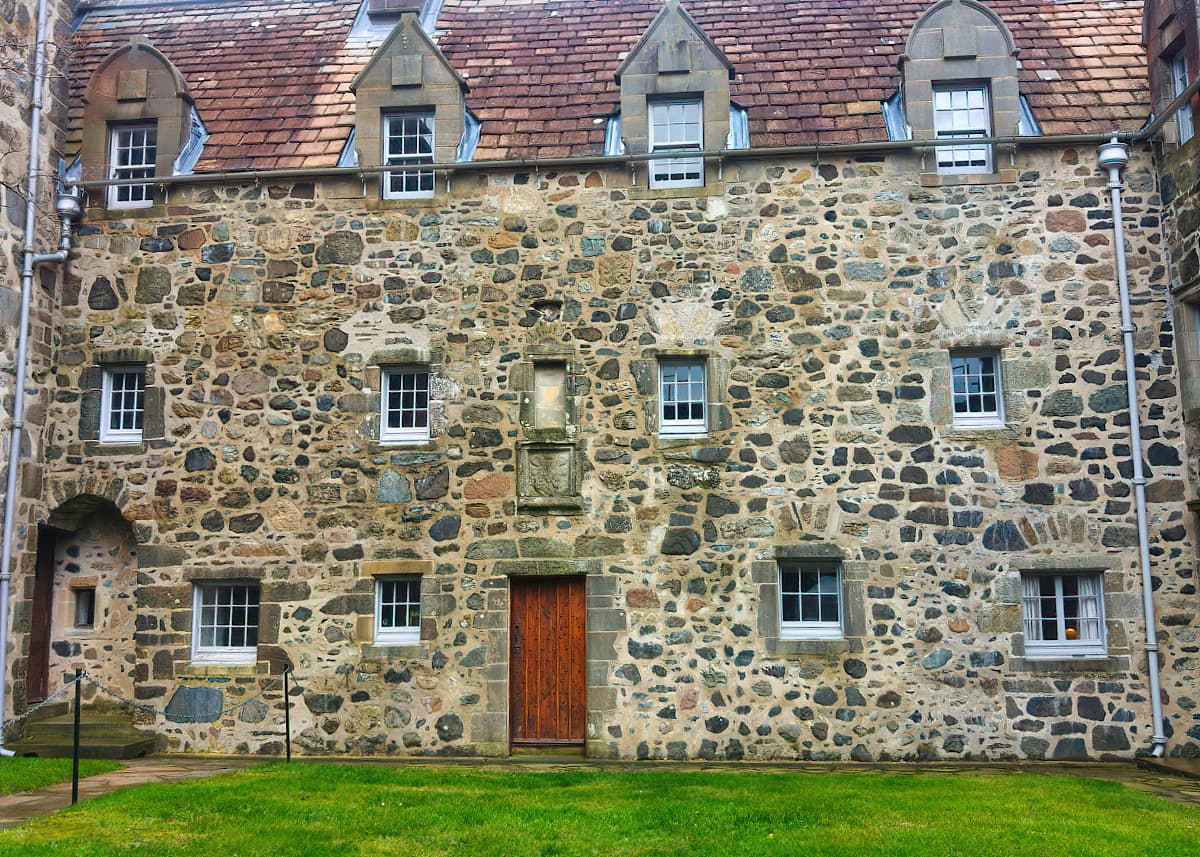
History
People have been living on the Isle of Mull since the end of the last ice age, around 8,000 years ago, and standing stones and stone circles are abundant on the island to this day. While the remains of Bronze and Iron Age inhabitants have been found strewn across the entire island, it was the arrival of Irish migrants in the 6th century that catapulted Mull into prominence within the western isles.
Saint Columba founded his monastery on nearby Iona in 563 AD, after which Mull became known as the pivotal centre of Christianity in Scotland.
Following a Viking invasion in the 9th century, Mull became part of the Kingdom of Norway and continued to be run by the Norse until the Treaty of Perth in 1266 AD which led to the island being handed over to the Scottish crown. However, due to infighting between the three ruling families of the western isles, Mull was eventually handed to the Lord of the Isles, John MacDonald, by Robert the Bruce.
The ruling MacDonald family continued to rule the western isles until 1493, when King James IV of Scotland declared the Lordship of the Isles forfeit. James IV gave authority over Mull to the MacLean clan shortly afterwards, although they were soon ousted by the Argyll Campbells, who sought to suppress the Covenanter religion that the MacLeans followed. In turn, the Campbells took charge of Duart Castle, only to sell it back to the MacLean clan several years later, and the MacLean’s keep ownership of it to this day.
Following the potato famine in the 1840s, Mull’s economy collapsed, and by the early 20th century there were more sheep living on the island than people. However, the population slowly rebounded to around 3,000 residents, and the people who live on the island today continue to farm the land and fish the sea just as they have done for hundreds of years, in addition to making money from the island’s new tourism industry.
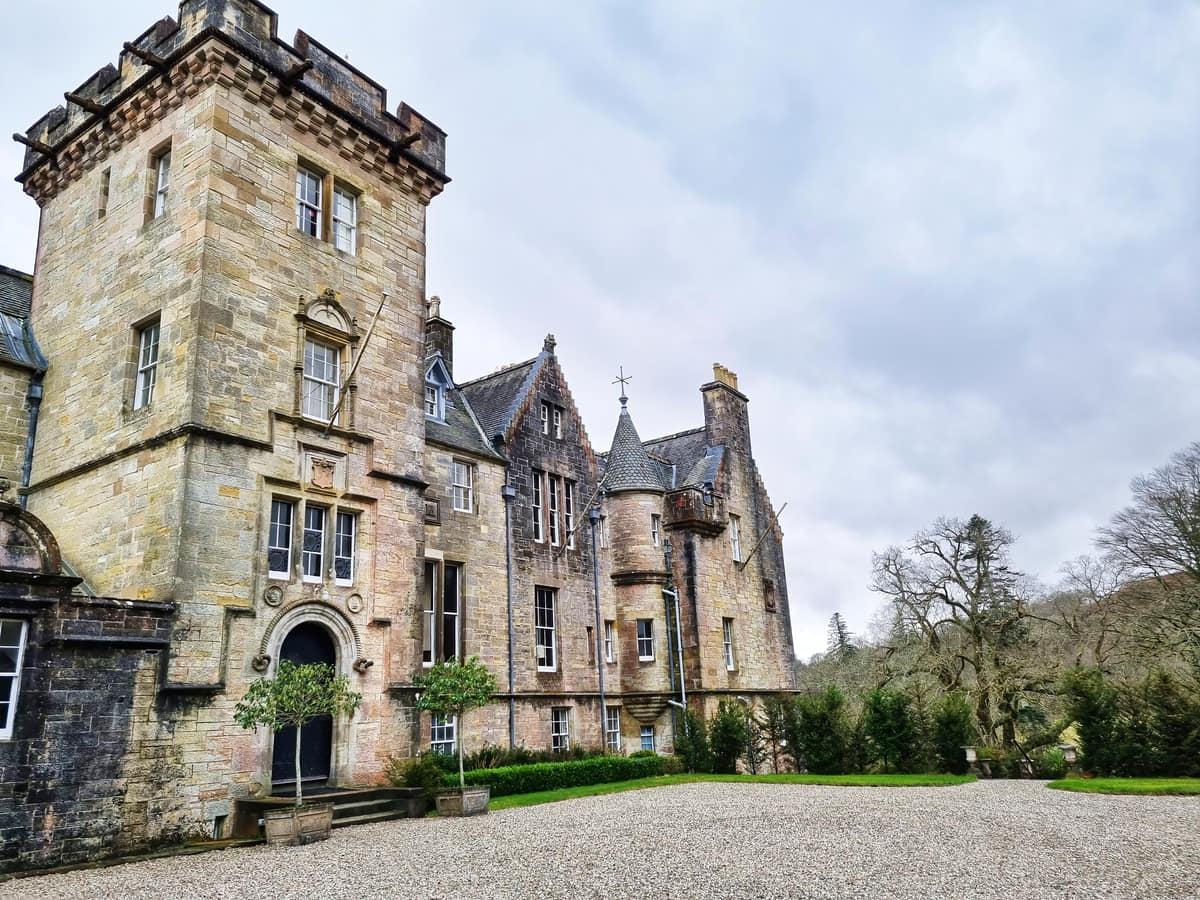
Book Tours in Scotland
Things to Do
Visit Tobermory: Known for its brightly painted houses along the high street, Tobermory is a charming seaside town that’s a must-visit for tourists. Explore local shops selling handmade crafts, enjoy fresh seafood at the harbour-side restaurants, and visit Tobermory Distillery to sample its renowned single-malt whisky.
Explore Duart Castle: Overlooking Duart Bay from its cliff-top perch, Duart Castle is an essential place to add to your sightseeing itinerary. Take a guided tour to learn about the castle’s turbulent history, walk around the battlements for panoramic views, or stroll through the beautiful grounds.
Wildlife Watching: Mull is home to some of Scotland’s finest wildlife. Join a wildlife tour to spot majestic sea eagles in the skies above, playful otters on the shorelines, and even minke whales in the surrounding waters. Alternatively, take a quiet walk through the island’s forests and moorlands to spot red deer or elusive pine martens.
Hike Ben More: For outdoor enthusiasts, a hike up Ben More, Mull’s highest peak, is a rewarding challenge. The ascent is tough but the panoramic view from the top is stunning, encompassing the whole island and beyond to the Scottish mainland. Remember to pack your camera for this unforgettable experience.
Staffa Tours: Don’t miss an opportunity to visit the uninhabited island of Staffa, famous for the spectacle of Fingal’s Cave. Regular boat tours depart from Mull to Staffa, which provide close-up views of puffins during the spring and summer months as well as the columns of basalt rock that make up the island’s cliff faces.
Frequently Asked Questions
How do I get to the Isle of Mull?
To get to the Isle of Mull, you have several transportation options depending on your starting point and preferred method of travel. Here are some of the most common ways to reach the Isle of Mull:
By ferry: The Isle of Mull is accessible by ferry from several ports on the Scottish mainland, including Oban, Lochaline, and Kilchoan. The Oban ferry is the most popular option, with regular sailings throughout the year. The journey takes around 45 minutes to 1 hour, depending on the route, and tickets can be purchased in advance or on the day of travel.
By car: If you are travelling by car, you can drive to one of the ferry ports mentioned above and take your vehicle onto the ferry. The journey time and ticket prices will vary depending on your starting point.
By air: If you are travelling from further afield, you can fly into Glasgow Airport and then take a bus or train to one of the ferry ports. Alternatively, you can fly directly to Oban Airport and take a short ferry ride to the Isle of Mull.Calmac Isle of Mull page.
What is the Isle of Mull known for?
The Isle of Mull is the second-largest island in the Inner Hebrides and is known for its breathtaking mountain areas as well as its incredibly scenic coastline.
Mull has one of the prettiest fishing villages in Scotland at Tobermory, as well as the highest island mountain at Ben More.
Can you drive around the Isle of Mull?
It is possible to drive around the majority of Mull’s perimeter except for the far southern edge, which has no road. The B8035 cuts through the centre of the island, allowing easy access to both the west and eastern sides.
Which is better, the Isle of Mull or the Isle of Skye?
Both islands have their pros and cons. Skye has more dramatic landscapes (especially at the Trotternish Ridge) but it is much busier than Mull and attracts more tourists. The roads are better on Skye and it is easier to get there thanks to the Skye Bridge.
Mull has fewer visitors than Skye and has an almost-as-pretty landscape, plus it’s closer to the main Highland ferry port of Oban. Mull is also close to the Isle of Iona and has nicer beaches.
Protect Your Family From Scotland's Biting Midges
- Powerful, reliable protection for up to 8 hours
- Water- and sweat resistant
- Repels midges, mosquitoes, horse flies, sand flies, fleas and ticks
- Safe for use on adults, children over 30 months and pregnant women
- Non-sticky, moisturising with a pleasant fragrance
- Packaging may vary



